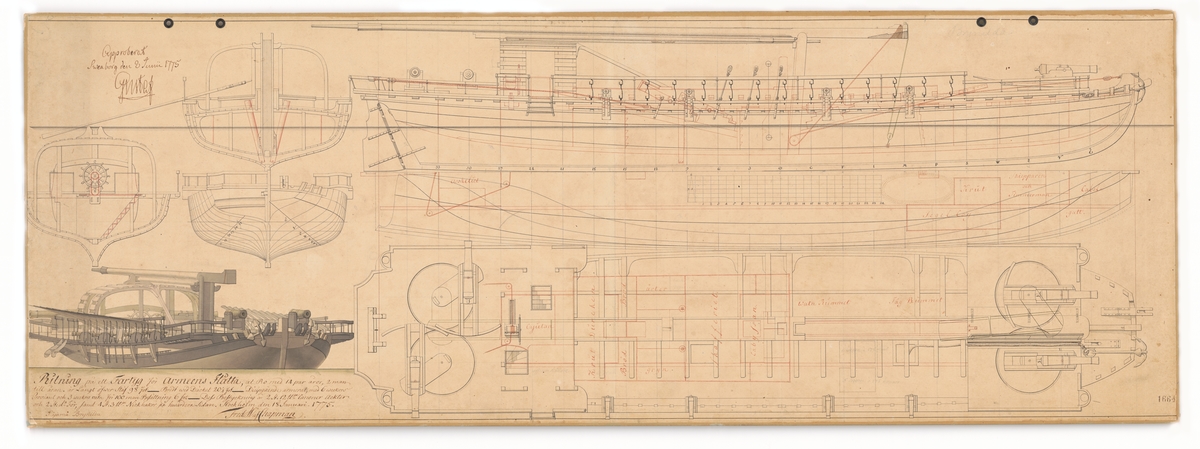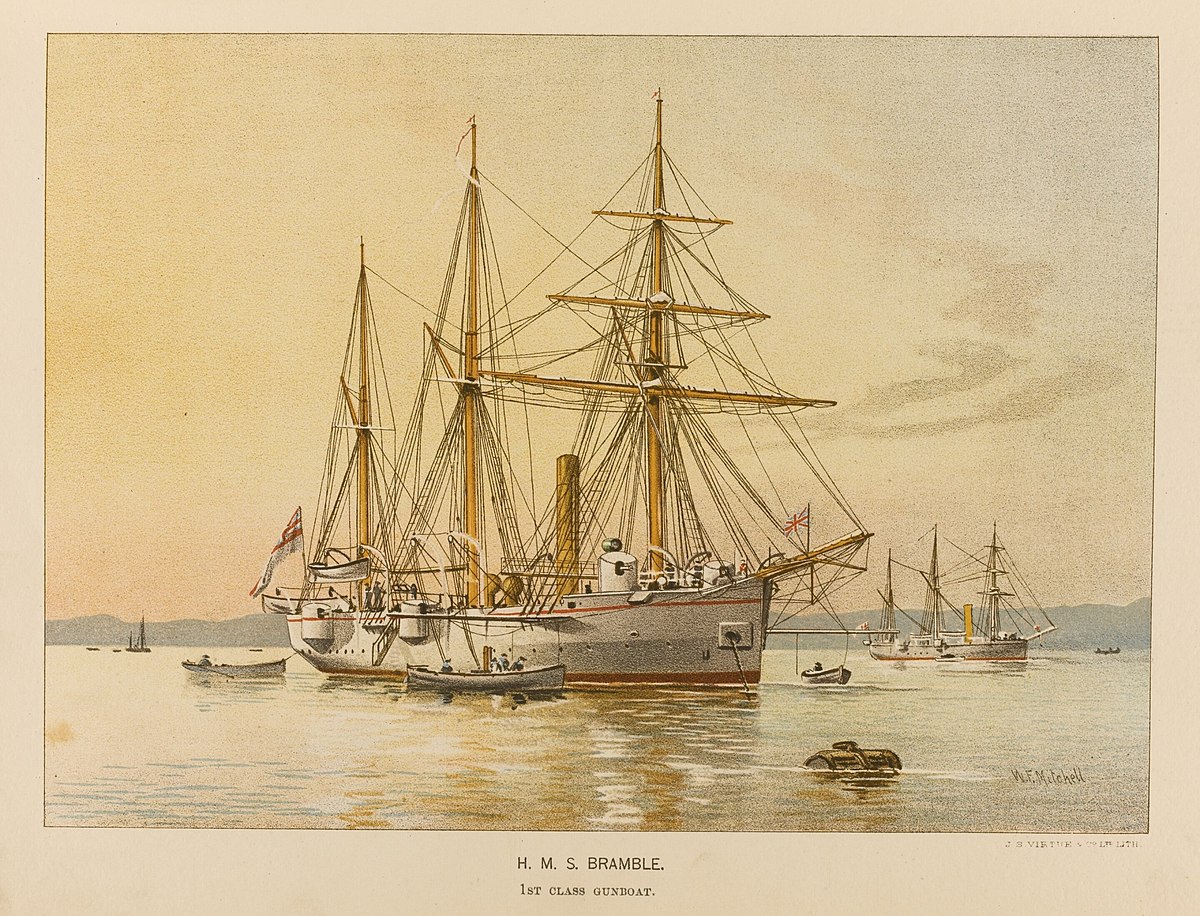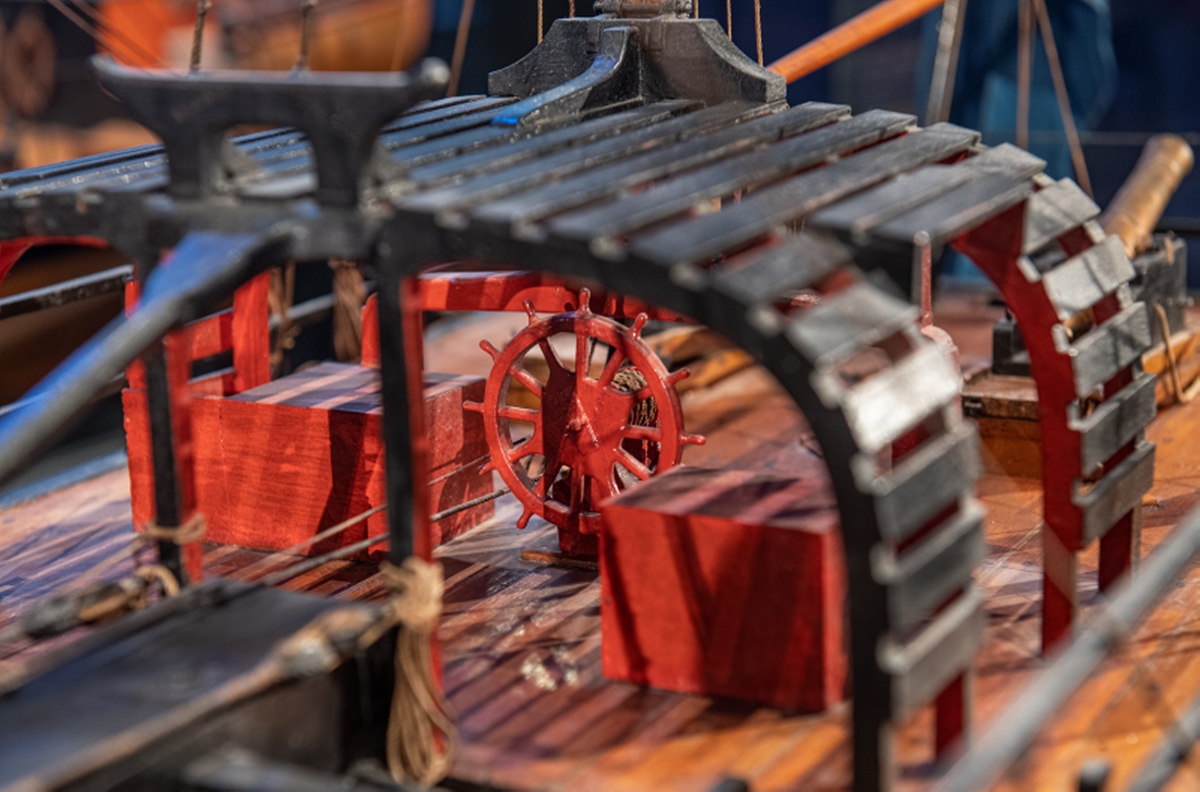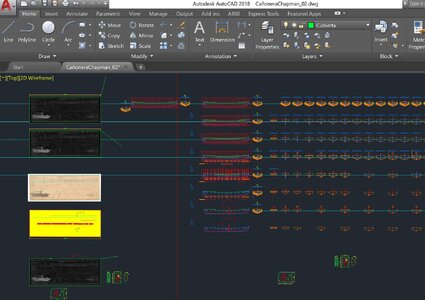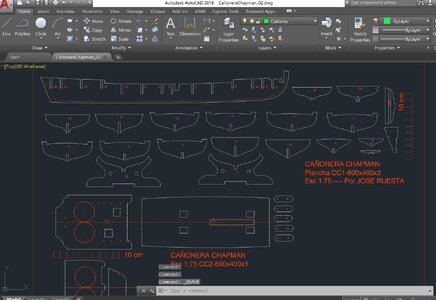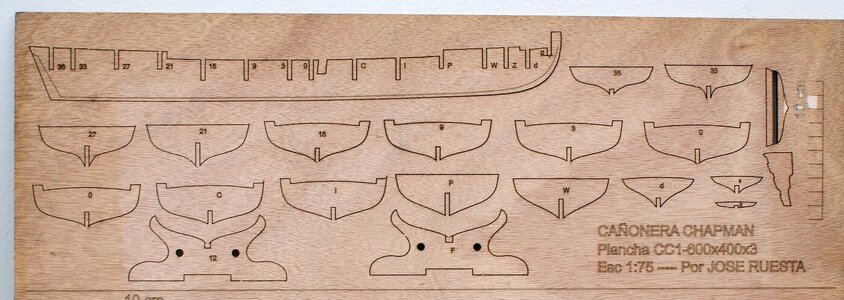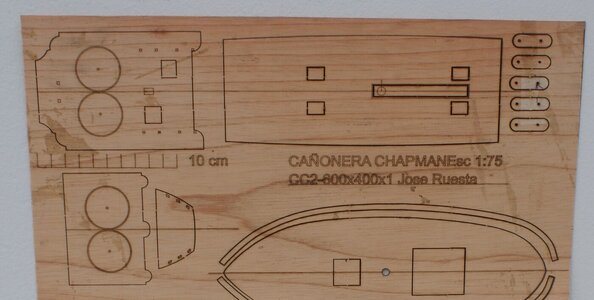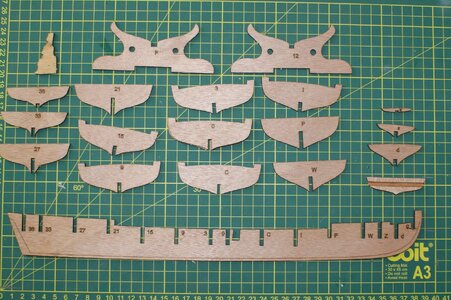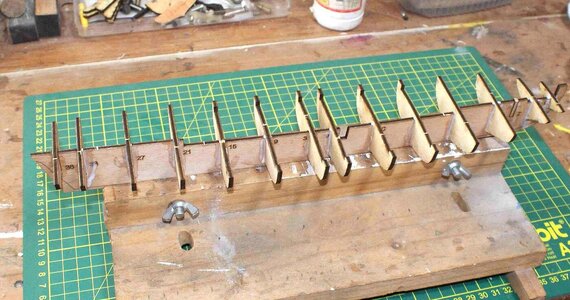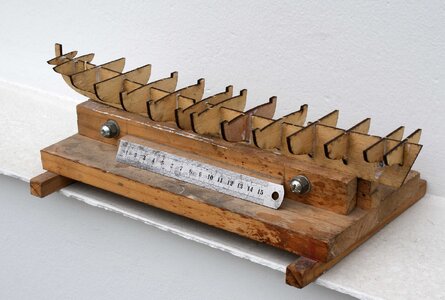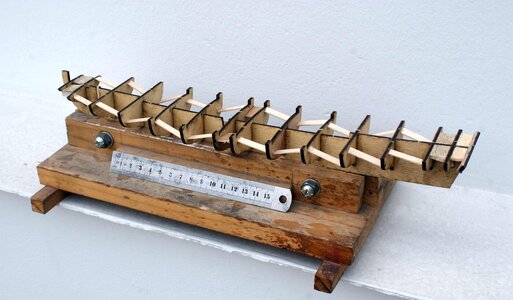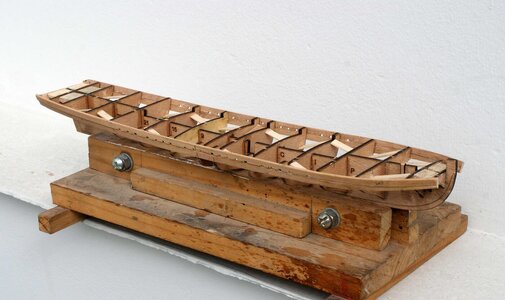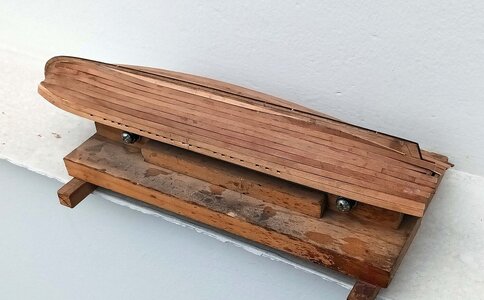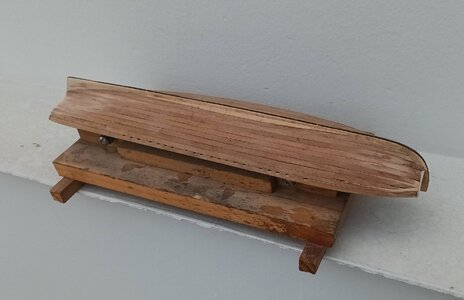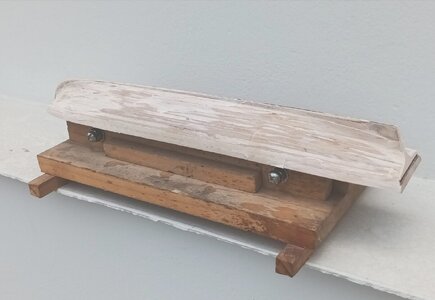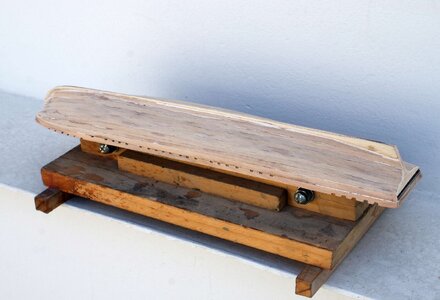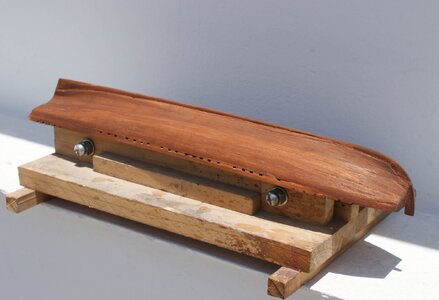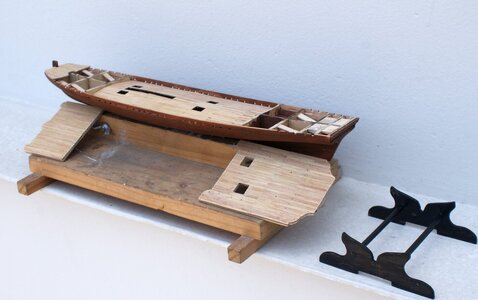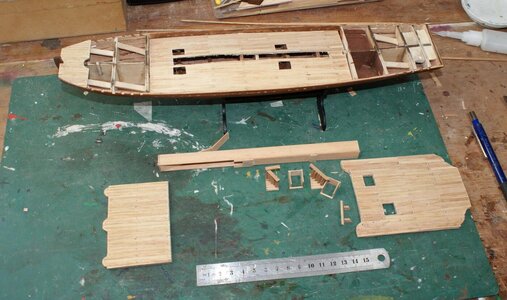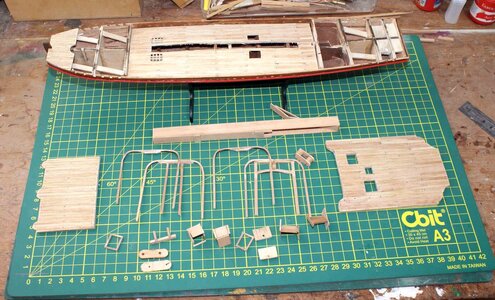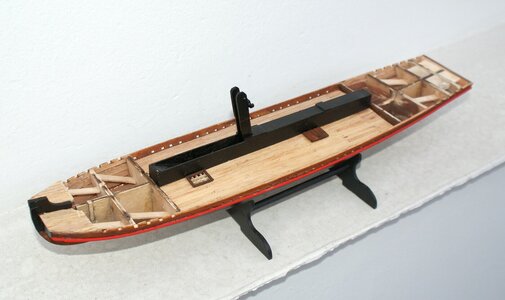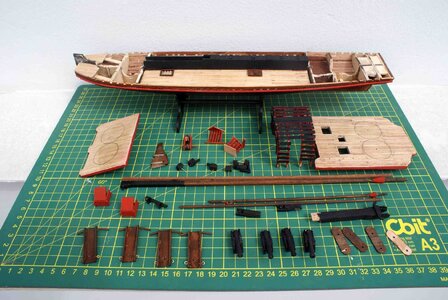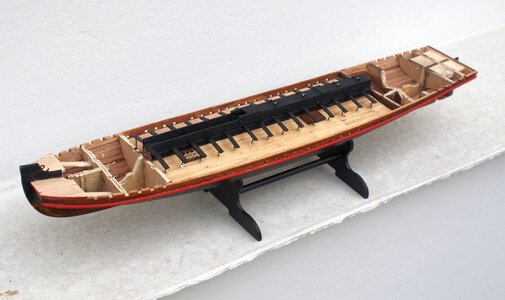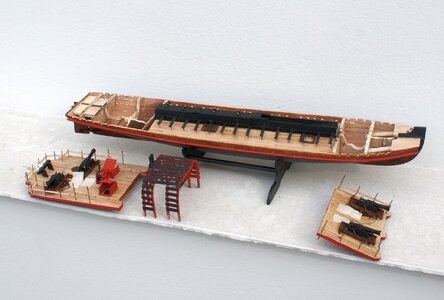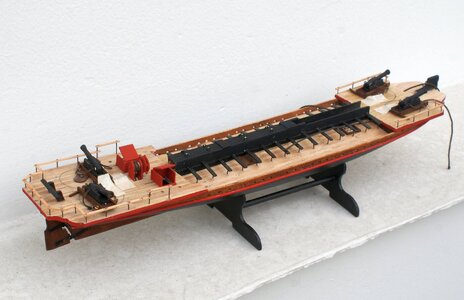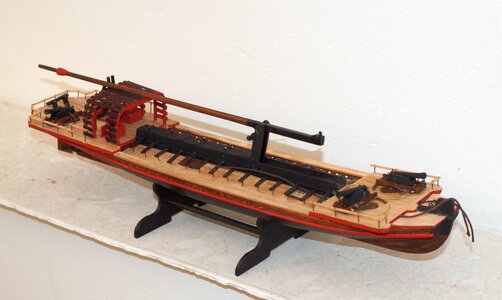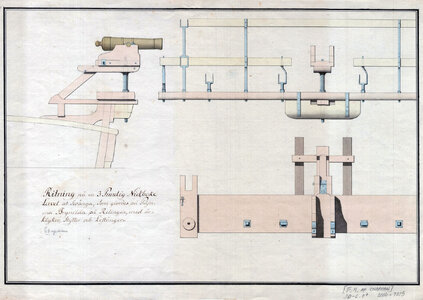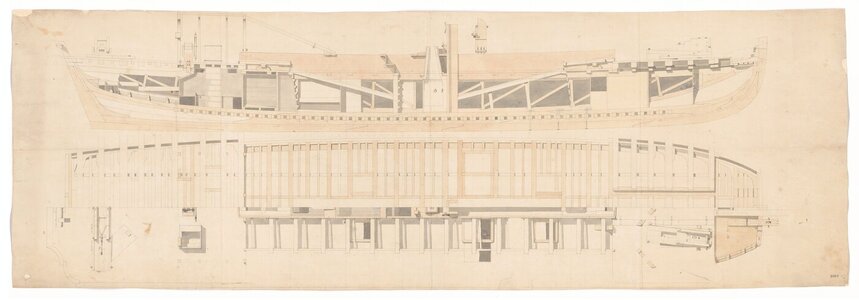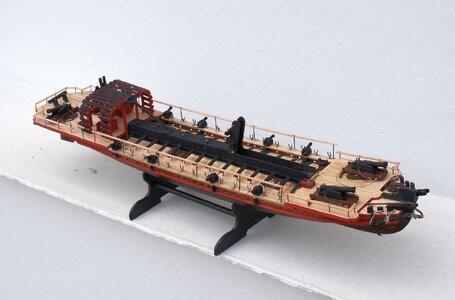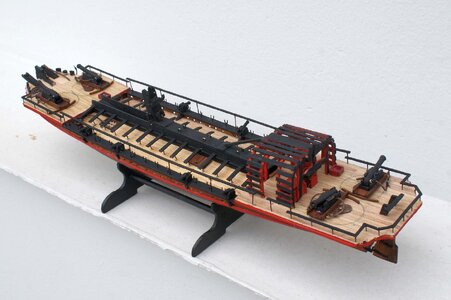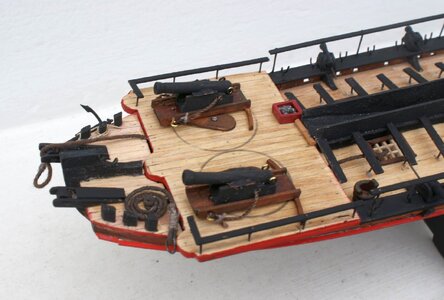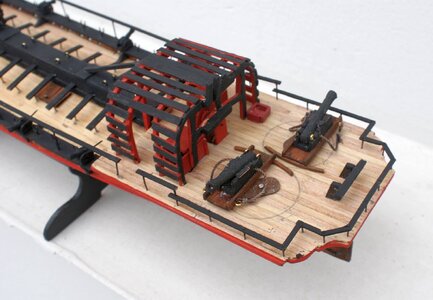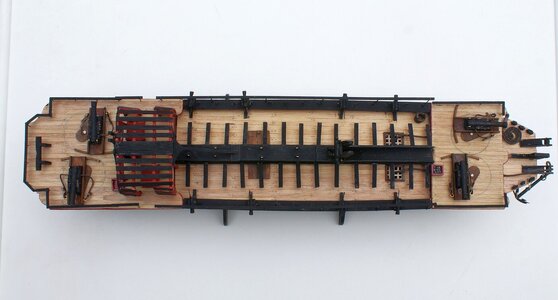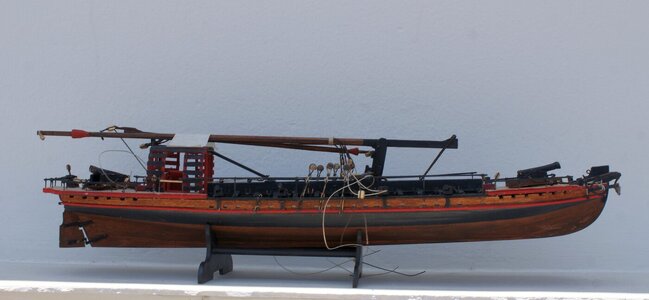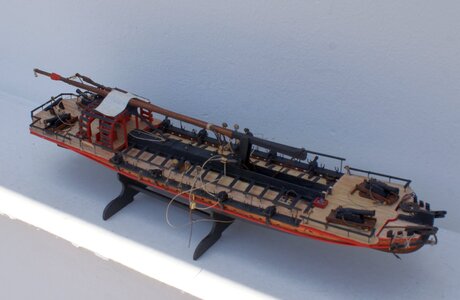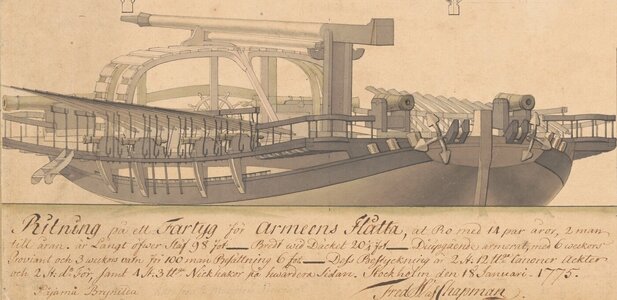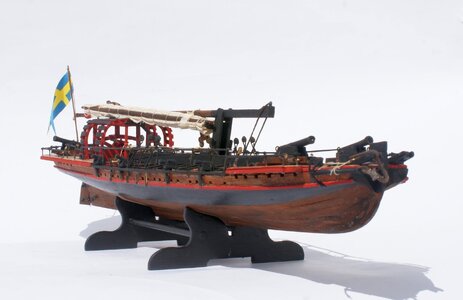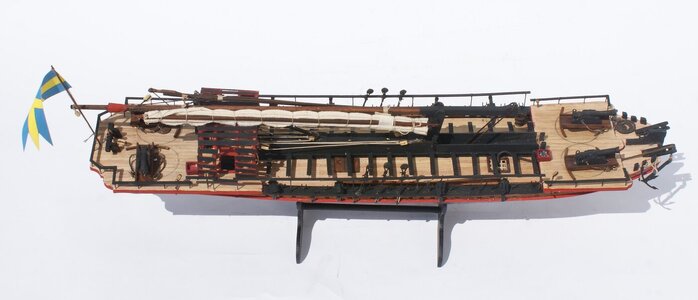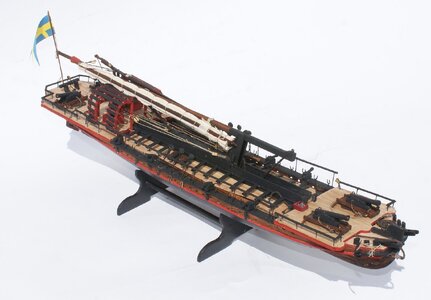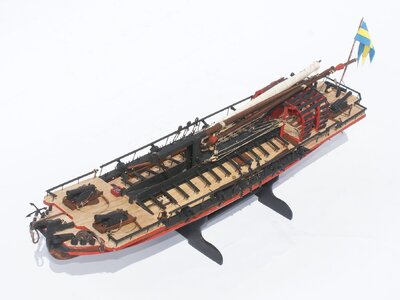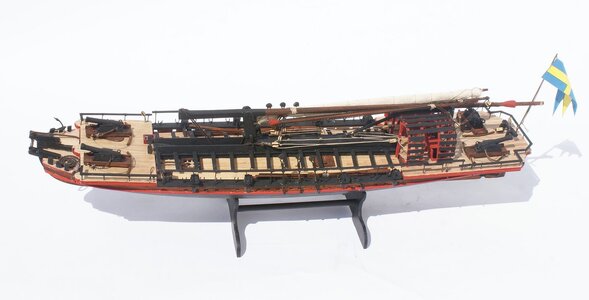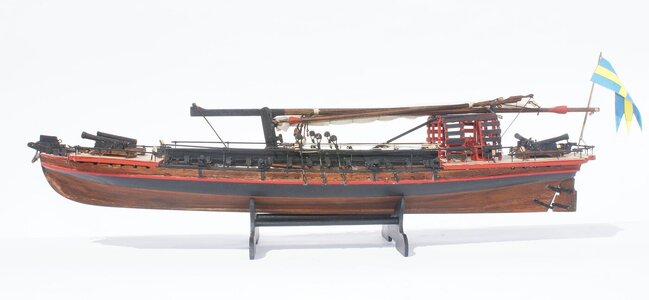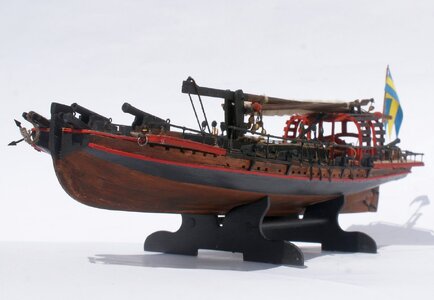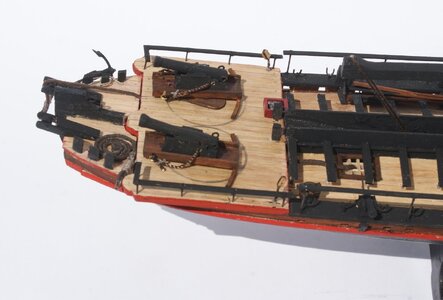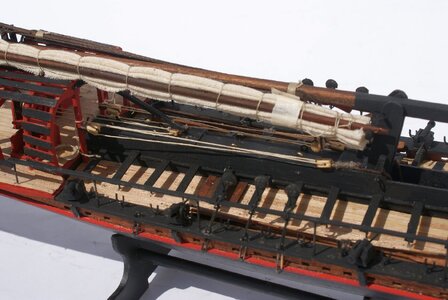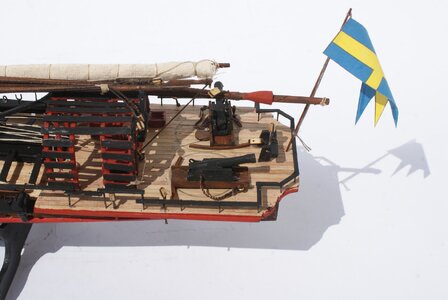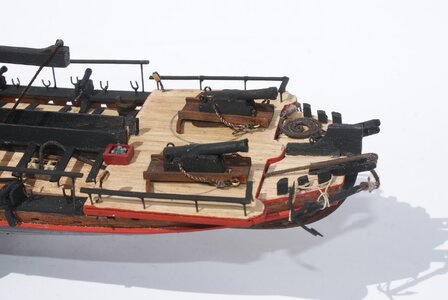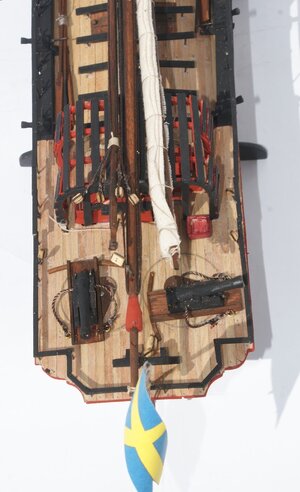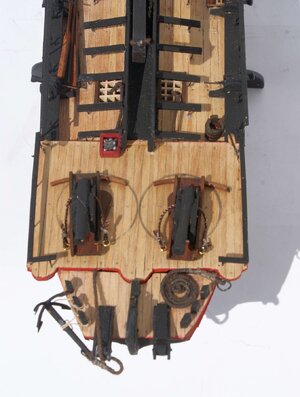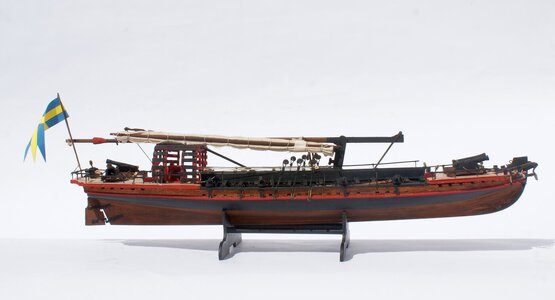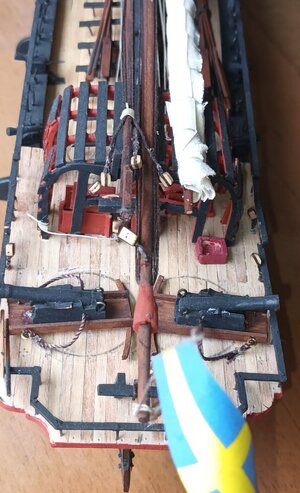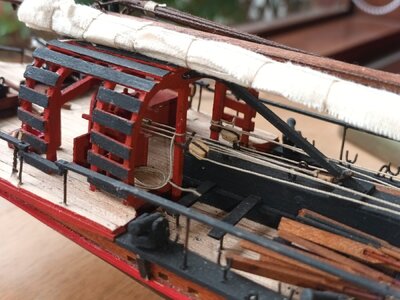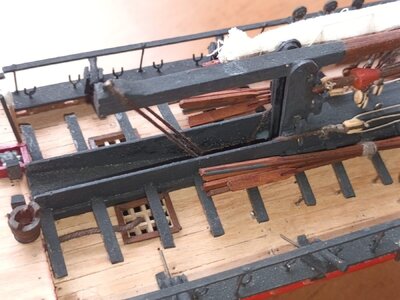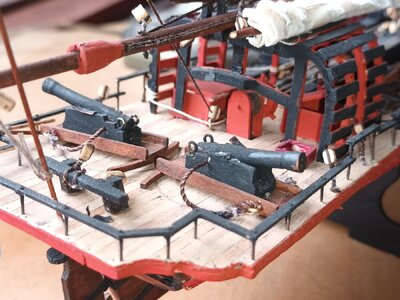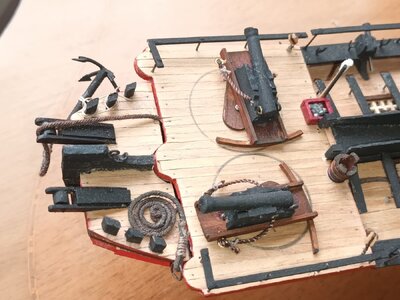Hello, in recent years I have prepared several models of small boats, they are not majestic like the frigates or liners that I see here, but I think that those gunboats, fishing boats or small sailing merchants have their charm.
Please, excuse my english
Påjama Brynhilda (Part 1a of 6)
Introduction
In August 2022, I finished a swedish gunboat, based on some Amati plans as well as photos of model, which served as a guide and also with the support of several comments from a modeling forum ; Anyway, the model ended up in Stockholm, in the room of one of my 8 yo. grandchildren (I wait on a shelf and not “sailing” in the nearby lagoon. In a couple of months they will come to visit and to give a similar gunboat to my other grandson, I started searching on the internet; on the digitaltmuseum.se website, I found several plans of frigates, longboats and gunboats, some plans were just sketches, are not completed, but I found a nice plan of a gunboat named Brynhilda, classified like Påjama and designed by Chapman.
These Påjama ships were larger than the gunboat I had finish, and they were classified as “Baltic frigates”, I will transcribe the description included in the original plan:
Drawing of a ship for the Army Fleet, to be rowed with 14 pairs of oars, 2 men per oar. Length above the stern: 98 feet - Deck width 20 1/4 feet - Armed draft 6 feet , with provisions for 6 weeks and water for 3 weeks for a crew of 100 men - The equipment is two 12-pounder guns in the stern and two more 12-pounders in the bow, as well as four 3-pounder Nickhooks on each side. , January 18, 1775. Fred H de Chapman. "Påjama Brynhilda"
From the plan, we can see the platforms at the bow and stern for the 12-pound cannons, which are mounted on gun carriages that can move and rotate around a vertical axis; also a central deck where the holds, seats for the rowers and the 3-pound stoners or as they call them Nickhooks are located.
The mainmast which is foldable, consists of two parts; The lower fixed one is a semi-box with interior dimensions of 0.50x0.50 m and 4.50 m in length, inclined 5º towards the bow, at the upper end it has an axis that allows the 22.3 meters long mast (which on the plane looks depressed) to be lowered. In addition, the mizzen rests next to it, which has a length of 12.0 meters and also rotates on a pin mounted on the poop, on the arch closest to the stern. Also above the poop, the gaff and sails already prepared must be tied.
“The Påjama ships were two-masted and single-decker and began construction in 1760. The Påjama ships was the smallest type and can almost be described as a corvette. This made it easier to maneuver than, for example, the Hemmeman, and although she was less well armed, she had the advantage that the artillery could also be used for rowing. The Påjama was primarily intended as a so-called news ship and was mainly used for courier and reconnaissance missions. The four Påjama ships participated only to a limited extent in Gustav III's Russian War. The Brynhilda, built in 1776, took part in the first battle of Svenskund in 1789. She was scrapped in 1799. A contemporary 1:16 scale model of the ship is in the collections of the Museum of Maritime History.
The next photos correspond to the model of the BRYNHILDA (1776) in the exhibition of the Maritime History Museum in Stockholm. There it is at a 1:16 scale, probably made in 1776 by Chapman, it was forgotten until the 1890s where it was restored and exhibited in the Pavilion of the „Archipelago Fleet“, at the General Exhibition of Art and Industry in Stockholm in 1897.
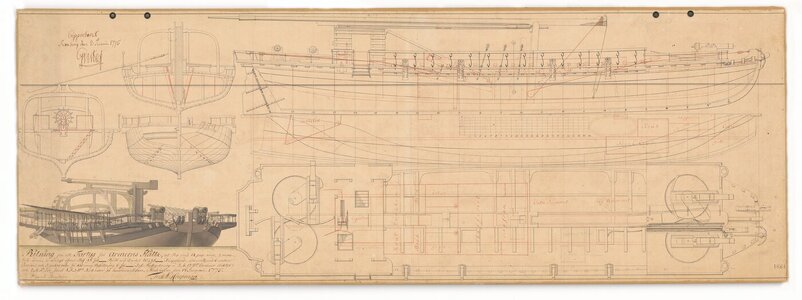
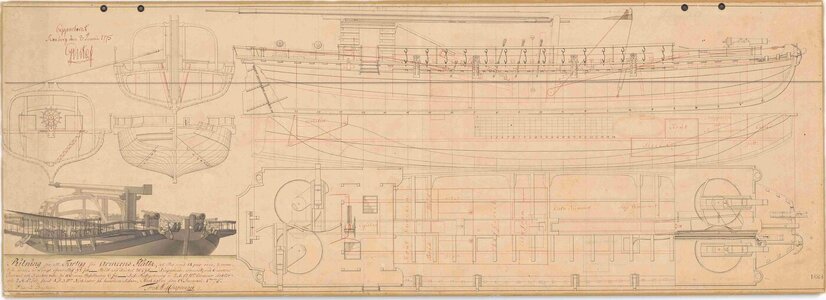
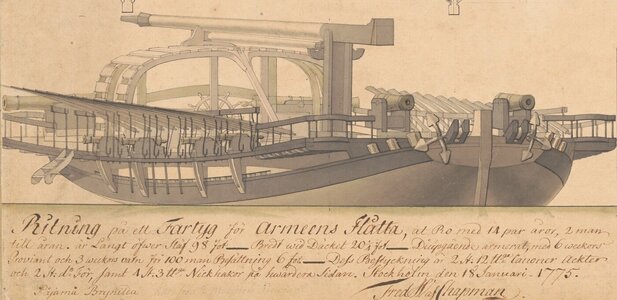
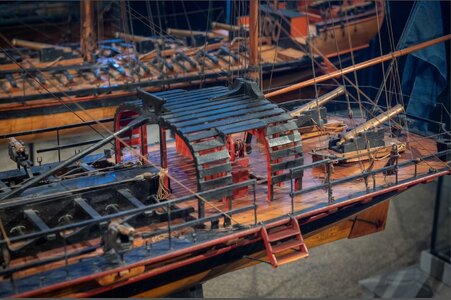
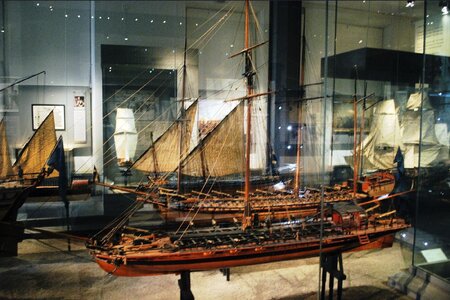
Please, excuse my english
Påjama Brynhilda (Part 1a of 6)
Introduction
In August 2022, I finished a swedish gunboat, based on some Amati plans as well as photos of model, which served as a guide and also with the support of several comments from a modeling forum ; Anyway, the model ended up in Stockholm, in the room of one of my 8 yo. grandchildren (I wait on a shelf and not “sailing” in the nearby lagoon. In a couple of months they will come to visit and to give a similar gunboat to my other grandson, I started searching on the internet; on the digitaltmuseum.se website, I found several plans of frigates, longboats and gunboats, some plans were just sketches, are not completed, but I found a nice plan of a gunboat named Brynhilda, classified like Påjama and designed by Chapman.
These Påjama ships were larger than the gunboat I had finish, and they were classified as “Baltic frigates”, I will transcribe the description included in the original plan:
Drawing of a ship for the Army Fleet, to be rowed with 14 pairs of oars, 2 men per oar. Length above the stern: 98 feet - Deck width 20 1/4 feet - Armed draft 6 feet , with provisions for 6 weeks and water for 3 weeks for a crew of 100 men - The equipment is two 12-pounder guns in the stern and two more 12-pounders in the bow, as well as four 3-pounder Nickhooks on each side. , January 18, 1775. Fred H de Chapman. "Påjama Brynhilda"
From the plan, we can see the platforms at the bow and stern for the 12-pound cannons, which are mounted on gun carriages that can move and rotate around a vertical axis; also a central deck where the holds, seats for the rowers and the 3-pound stoners or as they call them Nickhooks are located.
The mainmast which is foldable, consists of two parts; The lower fixed one is a semi-box with interior dimensions of 0.50x0.50 m and 4.50 m in length, inclined 5º towards the bow, at the upper end it has an axis that allows the 22.3 meters long mast (which on the plane looks depressed) to be lowered. In addition, the mizzen rests next to it, which has a length of 12.0 meters and also rotates on a pin mounted on the poop, on the arch closest to the stern. Also above the poop, the gaff and sails already prepared must be tied.
“The Påjama ships were two-masted and single-decker and began construction in 1760. The Påjama ships was the smallest type and can almost be described as a corvette. This made it easier to maneuver than, for example, the Hemmeman, and although she was less well armed, she had the advantage that the artillery could also be used for rowing. The Påjama was primarily intended as a so-called news ship and was mainly used for courier and reconnaissance missions. The four Påjama ships participated only to a limited extent in Gustav III's Russian War. The Brynhilda, built in 1776, took part in the first battle of Svenskund in 1789. She was scrapped in 1799. A contemporary 1:16 scale model of the ship is in the collections of the Museum of Maritime History.
The next photos correspond to the model of the BRYNHILDA (1776) in the exhibition of the Maritime History Museum in Stockholm. There it is at a 1:16 scale, probably made in 1776 by Chapman, it was forgotten until the 1890s where it was restored and exhibited in the Pavilion of the „Archipelago Fleet“, at the General Exhibition of Art and Industry in Stockholm in 1897.








